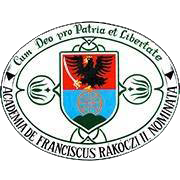Please use this identifier to cite or link to this item:
https://dspace.kmf.uz.ua/jspui/handle/123456789/3440| Title: | Василь Гаджеґа – визначний дослідник історії Закарпаття |
| Other Titles: | Vasyl Hadzhega, a significant researcher of the history of Transcarpathia |
| Authors: | Павло Федака Pavlo Fedaka Чотарі Юрій Yurii Chotari Csatáry György |
| Keywords: | Василь Гаджеґа;історико-архівні студії;історичні джерела;руські села;руські церкви;руські монастирі;русини (українці);жупи/комітати |
| Issue Date: | 2023 |
| Type: | dc.type.researchStudy |
| Citation: | In Україна: культурна спадщина, національна свідомість, державність. 2023. Випуск 37. c. 184-198. |
| Series/Report no.: | ;Випуск 37. |
| Abstract: | Резюме. На основі праць Василя Гаджеґи 20–30-х років ХХ ст., опублікованих переважно
в Науковому збірнику товариства «Просвіта» в Ужгороді (1922–1938) та краєзнавчому
журналі «Підкарпатська Русь» (1923–1936), а також на основі архівних джерел та інших
матеріалів, представлено історію Закарпаття з кінця ІХ ст., зокрема дати заснування
(ХІ ст.) багатьох руських (українських) етнічних поселень, церков і монастирів. Окремо
акцентовано увагу на тому, що поповнення руської людності та зміцнення тут руськоукраїнського етнічного ядра відбувалося упродовж ХІ–ХІІІ ст. унаслідок переселення
сюди русинів із галицьких, київських, чернігівських й інших руських земель, у
ХІV ст. – русинів із Поділля, що прийшли з подільським князем Федором Корятовичем,
у ХІV–ХVІ ст. – українських поселенців на основі т. зв. кенезького (шолтеського)
права – переважно з Галичини, а також Буковини й Волині. Наголошено, що важливою
складовою цієї концепції є дати заснування (з ХІ ст.) багатьох руських (українських)
етнічних поселень, церков і монастирів Закарпаття, які подав дослідник, а також
використання у богослужіннях грецького обряду та старослов’янської мови.
Водночас зазначено, що В. Гаджеґа належав не тільки до визначних дослідників
української історії Закарпаття, а й до провідних, українського спрямування,
культурних, церковних і громадських діячів краю 20–30-х років ХХ ст., був одним
із засновників та очільників товариства «Просвіта» Підкарпатської Русі, Руського
національного музею, Кооперативного союзу, Центральної Руської Народної Ради
й інших організацій. Встановлено, що його наукові та науково-популярні статті
відіграли важливу роль у поширенні історичних знань, у формуванні національної
свідомості й утвердженні державницьких устремлінь українців Закарпаття. Abstract. The purpose of the article is based on the works of Vasyl Hadzhega from the 20s and 30s of the 20th century, published mainly in the Scientific collection of the society «Prosvita» in Uzhhorod (1922–1938) and the local history magazine «Pidkarpatska Rus» (1923–1936), and based on archival sources and other materials, to present the history of Transcarpathia from the end of the 9th century, in particular the dates of the foundation (from the 11th century) of many settlements, churches and monasteries in Transcarpathia that had a Ruthenian (Ukrainian) ethnic character. Particular attention is paid to the fact that the replenishment of the Ruthenian (Ukrainian) population and the strengthening of the Ruthenian-Ukrainian ethnic core took place during the 11th–13th centuries as a result of the resettlement of Ruthenians from Galicia, Kyiv, Chernihiv and other Ruthenian lands; in the 14th century Rusyns from Podillia, who came with the Podillia prince Fyodor Koryatovych; in the 14th–16th centuries Ukrainian settlers based on the so-called Kenez (Schultheiß) law mainly from Galicia, as well as Bukovyna and Volhynia. It is emphasized that an important component of this concept is the researcher’s dates of foundation (from the 11th century) of many settlements, churches and monasteries of Transcarpathia, which had a Ruthenian (Ukrainian) ethnic character, as well as the use of the Greek rite and the Old Slavic language in religious services. At the same time, it is noted that Vasyl Hadzhega belonged not only to prominent researchers of the Ukrainian history of Transcarpathia, but also to the leading, Ukrainianoriented, cultural, church and public figures of the region in the 20s and 30s of the 20th century, he was one of the founders and leaders of the society «Prosvita» of Subcarpathian Rus, the Ruthenian National Museum, the Cooperative Union, the Central Ruthenian People’s Council and other organizations. It has been established that his scientific and popular scientific articles played an important role in the dissemination of historical knowledge, in the formation of national consciousness and the establishment of state aspirations of the Ukrainians of Transcarpathia. |
| URI: | https://dspace.kmf.uz.ua/jspui/handle/123456789/3440 |
| ISSN: | 2223-1196 |
| metadata.dc.rights.uri: | http://creativecommons.org/licenses/by-nc-nd/3.0/us/ |
| Appears in Collections: | Csatáry György Fedaka Pavlo |
Files in This Item:
| File | Description | Size | Format | |
|---|---|---|---|---|
| Pavlo_Fedaka_Yurii_Chotari_Vasyl_Hadzhega_vyznachnyi_doslidnyk_istorii_Zakarpattia_2023.pdf | In Україна: культурна спадщина, національна свідомість, державність. 2023. Випуск 37. c. 184-198. | 378.3 kB | Adobe PDF | View/Open |
This item is licensed under a Creative Commons License





